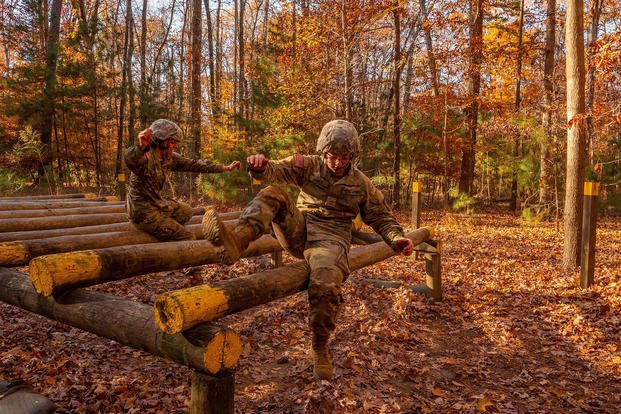We train and prepare for basic training programs, but often find that, after the basic training, we are actually in worse shape than when we started. This happens especially to those seeking more advanced special-ops level of fitness and, in this soldier's case, the Army Rangers. Sometimes, you can find extra time to train to get back to where you were. Sometimes, you have to use your free time on the weekends to play catch-up. Here is a very common response to basic training for those special-ops candidates seeking Rangers/Special Forces in the Army.
Hi Stew,
I finished my Army basic training and am currently having my AIT [advanced individual training] now. I am disappointed with the physical training and PT. Frankly, I think their PT is a joke, compared to how I prepared to get here. I lost significant fitness, and my run time got worse.
The bad thing is, I can't go out to do my own workout every day like I used to. I'm only allowed to go to the gym on weekends with my four-hours pass. What should I do to improve my fitness level?
Jim
Jim, this happens all the time. Use your AIT training and a progressive buildup when you do PT, runs and rucks through the week, and then spend an extra hour to lift or PT more on the weekends for the first week or two. Then add an hour on the weekends, mixing in longer runs and rucks for a few weeks. By the time you are done with AIT, you can build up for combination workouts on the weekends that incorporate all that you are missing during the week. Remember that you need to be running, rucking, lifting (core lifts/legs), and doing higher-repetition calisthenics for both upper body and the legs (pull-ups, push-ups, sit-ups, squats, lunges). Your five-mile timed run needs to be under 40 minutes, so make sure you are building back up to that distance with this two-week progression increase.
After months of decreased activity, you do not just want to start back where you left off before basic training. Your body is not ready for it. Basic is stressful on you, as you have to learn your job, stay up for long hours, be away from home for the first time (for most) and receive constant negative feedback from instructors. Take time to recover from that. Build back up smartly and over the time of your AIT.
Hope that helps.
Stew Smith is a former Navy SEAL and fitness author certified as a Strength and Conditioning Specialist (CSCS) with the National Strength and Conditioning Association. Visit his Fitness eBook store if you're looking to start a workout program to create a healthy lifestyle. Send your fitness questions to stew@stewsmith.com.
Want to Learn More About Military Life?
Whether you're thinking of joining the military, looking for fitness and basic training tips, or keeping up with military life and benefits, Military.com has you covered. Subscribe to Military.com to have military news, updates and resources delivered directly to your inbox.


















